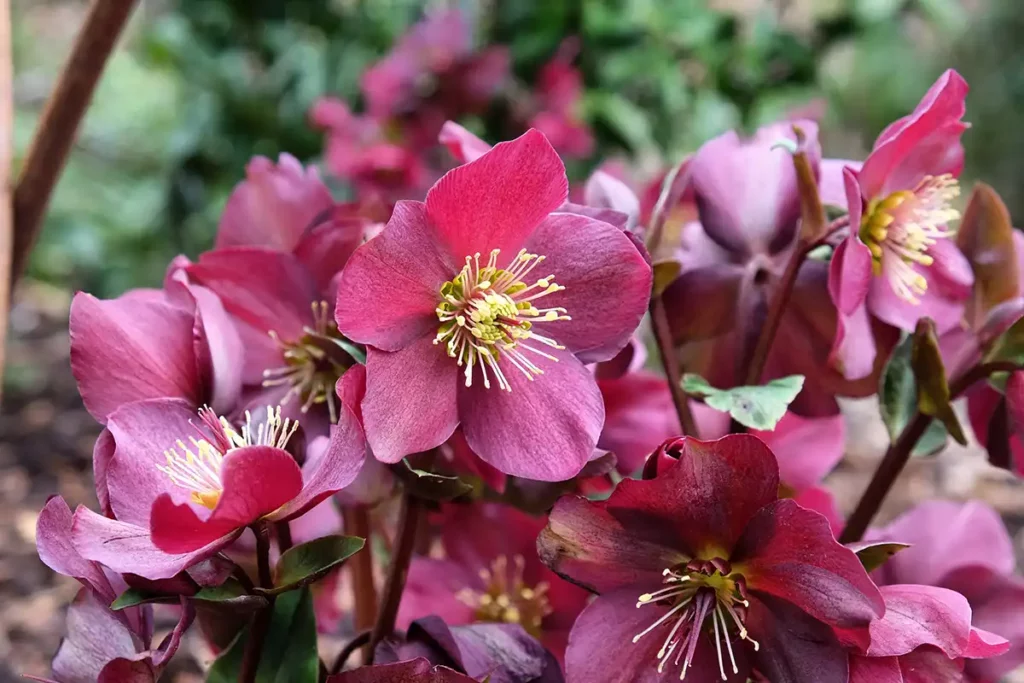Transform your garden by injecting Pantone’s colour of the year

Haskins Garden Centre’s in-house plant expert, Alasdair Urquhart, shares his top three plants in Viva Magenta to achieve a stimulating, dynamic, and striking garden all year round.
Pantone has announced ‘Viva Magenta’ as its colour of the year for 2023 – and its vibrant beetroot hue is set to be a popular trend both in the gardening and interior design world.
Haskins Garden Centre’s in-house plant expert, Alasdair Urquhart, said:
“The first months of a brand-new year are a good time to take fresh inspiration and curate new ideas for the garden. Magenta can easily be introduced into the garden year-round, from early summer into late autumn, from seasonal flower, to summer fruits.
“A good variety of colour and tones can be used to create warmth, depth and even make smaller gardens appear larger, and bigger plots feel more intimate. This can be achieved through a variety of coordinating colour combinations in the garden. Viva Magenta is a great accent colour that contrasts well against all types of green or silver foliage, and it also complements other plants with yellow, orange, or light blue flowers.
“Pantone describes magenta as a colour that promotes optimism and joy, which is exactly what your garden should spark all year, despite the season. Introducing a new colour can also give your mental health a boost. In particular, bright colours stimulate your senses to create feelings of happiness and also radiate positive energy which really lift the spirits.”
Alasdair’s top magenta-coloured plants to introduce to the garden this year are:
Hellebore ‘Ice n Roses Red’
Inject magenta into your garden instantly with low maintenance Hellebores that produce an abundance of flowers from December through to April. Hellebores are perfect for providing winter interest as they don’t need much sunlight and provide a much-needed source of food for pollinating insects emerging in early spring.
All Hellebores thrive in shade, making them ideal for border planting and woodland gardens, and make excellent ground cover.
Alasdair said:
“Hellebores are winter flowering and hibernate during the summer, so to keep them at their best, remember to mulch and water over the summer and they’ll happily bounce back in the autumn.”
Pennisetum Fountain Grass
For a more subtle splash of this year’s colour, try the seed heads from the Pennisetum grass family. Many Fountain Grass varieties have feathery flowers that offer an elegant haze of magenta in varying degrees.
These grasses are favoured by many to create structure, texture and ethereal colour, especially in smaller gardens or in pots, making them useful in many styles of garden.
Alasdair said:
“Plant fountain grasses in late spring to add drama to a late summer or autumn border, preferably in a spot that receives full sun. Pennisetum’s feathery seed heads can also soften the edge of a path or patio.”
Calycanthus ‘Hartlage Wine’
As a hybrid of the Carolina Allspice, the Calycanthus ‘Hartlage Wine’ is an easy to grow shrub producing impressive magenta flowers.
These plants, also known as the ‘Sweetshrub’, perform well in all soil types and can withstand a range of conditions from partial shade to full sun. Calycanthus gives off a sweet cinnamon scent from its leaves and has a long flowering period, producing burgundy red with a hint of cream blooms all summer.
Alasdair said:
“Despite growing in all conditions, Calycanthus performs even better in rich, moist soils with a good dose of sun. These low maintenance Sweetshrubs are best to plant in autumn before flowering in May through to late September.”
